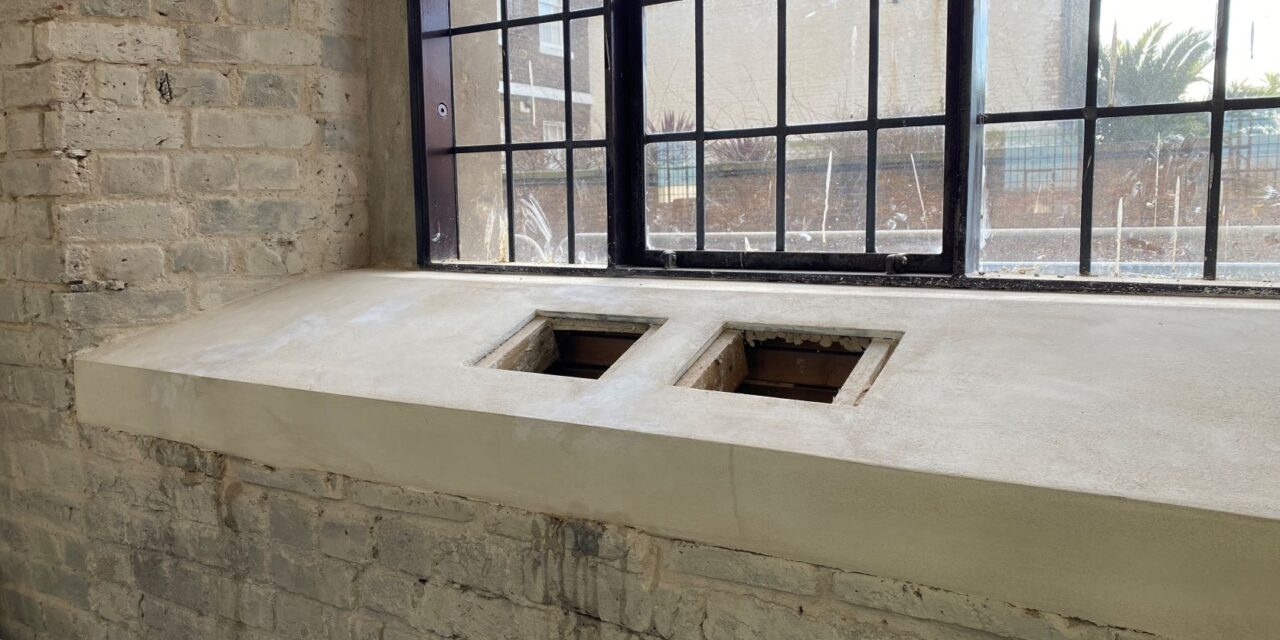A derelict historic landmark on the Thames Estuary in Kent is once again being seen at its magnificent best.
Sheerness Dockyard Church has been an imposing feature at the entrance to the former Royal Dockyard on the Isle of Sheppey since its construction in 1828.
Designed by George Ledwell Taylor, Surveyor of Buildings to the Navy, the church was reduced to a shell after a fire in 2001. It is now being restored to its former glory thanks to the help of heritage plasterwork specialists Artisan Plastercraft.
Work on the £8 million project began in November 2020 and Kent-based Artisan Plastercraft was called in by main contractors Coniston Limited because of the firm’s expertise in using traditional methods to conserve the historic fabric of buildings.
The goal was to restore and bring the landmark church back into use as a business incubator hub for young people – a transformation from a roofless ruin into a thriving venue boasting an exhibition area, leisure, education and working spaces, offices, cafe and meeting rooms – all while ensuring the conservation of the remaining historical features of the building.
Michael Arney, of Artisan Plastercraft, said: “ It was a particularly satisfying project to be involved with and it is pleasing to know that the newly revitalised building – such an important asset to the area – is going to be put to excellent practical use.
“Our role in the project was to secure and tidy the lime plasterwork of the main transept arch and restore the window ledges internally. More specifically, we undertook a variety of tasks including conservation, restoration and replacement of lime plaster inside the church’s main hall, centred around the large archway at the western end, and applying lath and plaster to the internal window reveals.
“We found that areas of plaster had badly deteriorated and so our conservators had to remove any loose pieces, retaining and refixing where appropriate and restoring plaster where it was sound, consolidating and patch repairing where necessary.
“Some decorative features, such as the arch plinth and sections of cornice, required more intensive restoration, which was achieved by taking a squeeze of similar or opposing mouldings and using these impressions to build up detail and sympathetically restore the plasterwork to its former glory.
“Whilst the interior has been completely renovated to suit its repurposing, much of the existing fabric has been stabilised and conserved as found, preserving what was left of the 1881 interior and its structure of cast iron columns.”
Artisan took seven months to complete the work. The project was led by the Sheerness Dockyard Trust and an operator for the business centre and youth business support service is due to be appointed shortly.
The area is of significant importance due to its long connection with the Royal Navy and the church as an architectural masterpiece, which had unfortunately found itself named as one of the most important buildings at risk in the south-east of England.
Time had inevitably took its toll on the Grade ll* listed building – a situation not helped by the ravages of two fires in 1881 and 2001, which caused extensive damage, and it was against this backdrop that a rescue bid was launched by Sheerness Dockyard Preservation Trust.
The restoration project benefitted from a £4.2 million grant from The National Lottery Heritage Fund and additional major support from Historic England and a number of trusts, foundations and individuals. The restored building is due to open in May or June 2023.
For more information about Artisan Plastercraft or to see the specialisms they cover visit their website www.artisanplastercraft.com.


